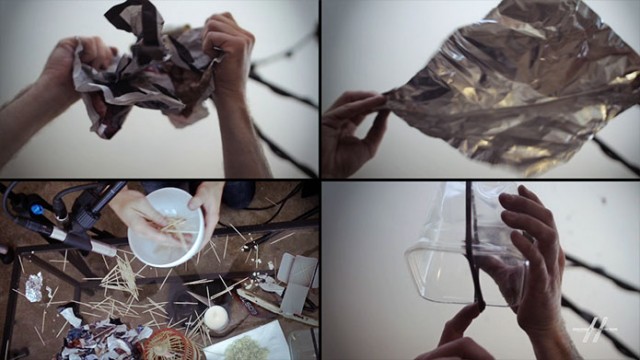Convolution is a process fundamental to understanding digital sound. Any audio can be imagined as the combination of the frequency and temporal domains. With convolution, you can simulate the combination of one sound with another, or one sound with an environment.
Traditionally, that has meant reverbs. But it can mean more – a lot more. Apart from simulating instruments, it can synthesize never-before-heard and impossible sound.
Our friend Diego Stocco has been hard at work opening up some of those doors to producers. When we last joined Diego, he was teaching you sound design techniques. This time, he has both a technique and a collection of painstakingly-recorded sounds.
And because by default you’re dropping these impulses into an effect, this is the very opposite of a sample library. Rather than reproducing what you hear Diego doing, you can find your own character of sounds by substituting your rhythms and audio, and the potential results are vast.
Diego explains the library thusly:
(first, in video form, an intro to the technique)
I’m very happy to introduce to you guys “FFS // Rhythmic Convolutions”, which is a collection of brand new Impulse Responses I specifically designed for the processing of rhythmic elements and instruments like drum machines, real drums and percussions, beat boxing and in general instruments that have a percussive quality.
This is a set of 200 Impulse Responses that I made from organic sounding sources and materials like metal, glass, paper, rubber, wood, water, etc.. organized into 10 sonic themes, that can also be mixed together to create hybrid sounding results.
You don’t actually have to buy anything here – you might just take that video as inspiration. But if you do want some extra IR files, they’re here for you at the reasonable price (I think) of US$29.99. The extended tutorial video is again $9.99, but this time you can watch an initial video by way of preview (and it covers a lot, which may whet your appetite for more).
In the free video, he shows you how he’s using the technique, followed by another video that does some surprising things with the sounds of bees.
Ableton Live Suite now includes a convenient couple of convolution reverbs implemented in Max for Live; you can see those in action here. But any convolution effect or convolution reverb that has a file import capability – and any good one should – will do. (You could also use an implementation in a DIY environment.)
I have to say, I’m especially inspired to hit the studio on this one. I’m eager to try out his impulse responses, and record some of my own – and toy with some other rhythmic ideas. I’ll share if I come up with anything good, in case you want another set of user impressions before you buy.
The tutorial:
http://www.diegostocco.com/ffs02-convolution-processing/
The impulses:
https://gumroad.com/l/FFSRC

